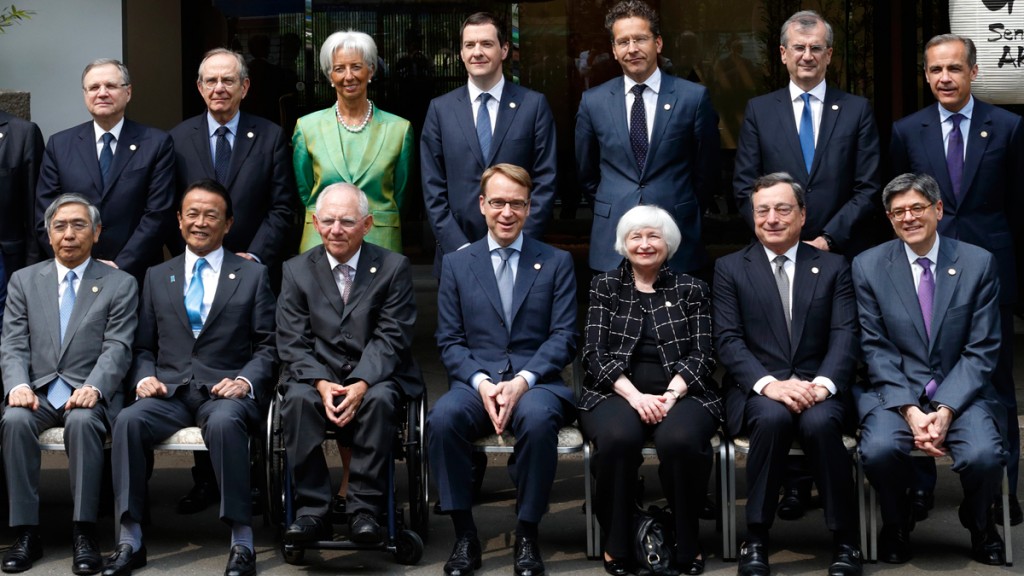
Today I want to turn to a long-running story that has come to something of a head this week – the collapse in bond yields.
Almost every developed bond market in the world saw yields plumb new lows this week. German ten-year yields collapsed into negative territory for the first time since the 1920s, according to Kathleen Brooks at City Index.
Germany is far from alone. Gilts in the UK and Treasuries in the US remain in positive territory, but only just.
But how long can this go on for?
Central banks – double or quits?
As Eoin Treacy points out, the years since the financial crisis have proved a very nice environment for bond traders, who have “been enjoying a very profitable time with central banks doing just about everything to make sure they make money, provided of course they are long”.
But anyone investing in bonds for the long term is not so happy. “With close to 50% of all outstanding sovereign bonds and quite a few highly rated corporates now yielding less than zero, the ability of bond investors to cover their liabilities – namely pensions – is far from ensured.”
This is most definitely making life difficult for said investors. As the FT points out, “this is an awkward development for pensions”. As the yields on 30-year gilts tumble, the size of corporate pension deficits is getting ever wider, notes Credit Suisse economist Neville Hill.
However, as Treacy continues, this is a problem for the longer term. For now, “if central banks have not achieved their goals of self-sustaining growth, are they more likely to continue on a path of extraordinary accommodation, or try monetary probity?”
In other words, the thing driving the bond bull market and the loopy, negative-yield world we’re in is the fact that we’ve had a massive, price-insensitive buyer in the market in the form of global central banking.
Everyone from the US Federal Reserve to the Bank of England to the Bank of Japan to the European Central Bank (ECB) is heavily invested in and committed to the idea that the answer to our growth problems lies in adopting sufficiently aggressive monetary policy.
They’ve bet the house on that option. Do they give up now? Or do they double down? The path of least resistance is to double down. Giving up would be damaging to the egos involved (no one likes admitting that they’re wrong). It would also be politically unpopular – loose monetary policy is always going to be more popular than tight policy, certainly for as long as inflation remains relatively low.
In short, as Treacy notes, the only way to get out from under our current “mountain of debt… is through inflation and therefore even more extreme monetary measures.”
And they won’t take much persuading to enact these measures. For example, a campaign group of MEPs (called “Quantitative Easing for People”) has joined forces to call for Mario Draghi at the ECB to embrace the notion of helicopter money – printing euros and handing them out to consumers, basically – as well as the idea of funding the European Investment Bank with printed money, to encourage infrastructure development.
“A specific concern,” reports the FT, “is that the ECB is focused too much on supplying cheap money to the financial system, rather than directly to consumers.”
What if central banks go into overdrive at just the wrong moment?
The irony is, the growing demand for more action on the monetary policy front is still coming, even although economic data around the world is really not that bad.
UK consumer spending roared ahead last month. Even the eurozone is showing some small signs of recovery. And Japan’s economic data just isn’t that bad either – certainly not as bad as the toppling stockmarket would suggest.
What happens if things get better and central banks are still in emergency mode? Is it even perhaps possible that it’s this very fear – of what central banks might have to do with rates in the future should growth and inflation take off – that is holding the economy back right now?
I doubt we’ll get a chance to find out. Central banks are sticking grimly to their course. Don’t be surprised to see negative interest rates in the UK before this is over.